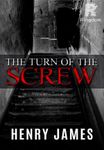61 books
-
1. Henry James Best Novels
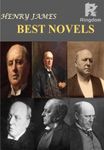
Henry James OM (15 April 1843 – 28 February 1916) was an American-British author regarded as a key transitional figure between literary realism and literary modernism, and is considered by many to be among the greatest novelists in the English language. In this book, we have collected James 11 best novels : The turn of the screw (a movie adaptation this year) The American The Portrait of a lady The Golden bowl The Aspern papers What Maisie knew Daisy Miller The Bostonians The Ambassadors Wings of the dove Washington Square A well-formatted, easy-to-read book, suitable for any e-reader, tablet or computer. The reader will go from one novel to another one, one section to another one as quick as possible. James detailed biography is also included in this edition.
-
2. The Ambassadors

The Ambassadors by Henry James. First published in 1903, the novel follows middle-aged Lambert Strether as he is dispatched from Massachusetts to Paris by his wealthy fiancée to rescue her son, Chad Newsome, from the corrupting influences of Europe and its wicked women. Once the mild-mannered and inexperienced Strether arrives in Paris, however, Chad introduces him to a world that he finds refined and sophisticated, rather than debauched and base. Mrs. Newsome, waiting in Massachusetts, grows impatient and sends more ambassadors to retrieve her wayward men. But Strether has become especially enchanted by Chad’s female friends Madame de Vionnet and her daughter, Jeanne, and he begins to wonder if, all his life, he has missed out on what the wider world has to offer. “Live all you can; it’s a mistake not to,” he tells a friend in one of the most memorable scenes in this darkly comic, masterfully written story of liberation, self-discovery, and the meaning of living well.
-
3. Washington Square
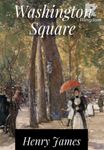
Washington Square by Henry James. Washington Square marks the culmination of Henry James's apprentice period as a novelist. With sharply focused attention upon just four principal characters, James provides an acute analysis of middle-class manners and behaviour in the New York of the 1870s, a period of great change in the life of the city. This change is explored through the device of setting the novel's action during the 1840s, similarly a period of considerable turbulence as the United States experienced the onset of rapid commercial and industrial expansion. Through the relationships between Austin Sloper, a celebrated physician, and his sister Lavinia Penniman, his daughter Catherine, and Catherine's suitor, Morris Townsend, James observes the contemporary scene as a site of competing styles and performances where authentic expression cannot be articulated or is subject to suppression.
-
4. Italian Hours
(1909) Preface The chapters of which this volume is composed have with few exceptions already been collected, and were then associated with others commemorative of other impressions of (no very extensive) excursions and wanderings. The notes on various visits to Italy are here for the first time exclusively placed together, and as they largely refer to quite other days than these--the date affixed to each paper sufficiently indicating this--I have introduced a few passages that speak for a later and in some cases a frequently repeated vision of the places and scenes in question. I have not hesitated to amend my text, expressively, wherever it seemed urgently to ask for this, though I have not pretended to add the element of information or the weight of curious and critical insistence to a brief record of light inquiries and conclusions. The fond appeal of the observer concerned is all to aspects and appearances--above all to the interesting face of things as it mainly used to be.-- H. J.
-
5. The Golden Bowl

Set in England, this complex, intense study of marriage and a******y completes what some critics have called the "major phase" of James' career. The Golden Bowl explores the tangle of interrelationships between a father and daughter and their respective spouses. The novel focuses deeply and almost exclusively on the consciousness of the central characters, with sometimes obsessive detail but also with powerful insight.
-
7. Ritratto di signora

EDIZIONE REVISIONATA 20/09/2019. IN OFFERTA LANCIO! Era una ragazza intelligente e generosa, una bella e libera natura: ma che cosa avrebbe fatto di sé? La giovane americana Isabel Archer alla ricerca di un ruolo pubblico e di modelli di comportamento meno provinciali, decide di stabilirsi in Europa, rifiuta due proposte di matrimonio e, diventata ricca al punto di potersi permettere tutto, resta intrappolata in quella ricca società fiorentina e romana che ritrova il suo simbolo ideale in Gilbert Osmond, uno snob in caccia di patrimoni, preoccupato soltanto che siano rispettati i codici di comportamento dell’aristocrazia. Sarà lui ad assicurare un destino di solitudine a Isabel che, prigioniera del rapporto con Osmond e relegata al ruolo ufficiale di moglie e madre, si avvierà per gradi, alla propria decadenza psichica. “Ritratto di signora” può essere letto come il romanzo di un’iniziazione americana, o come il romanzo della realtà del denaro e del potere che ne deriva, ma resta soprattutto un paesaggio d’anime, tratteggiato da un maestro del realismo psicologico.
-
8. In The Cage
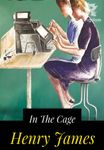
In The Cage by Henry James. An unnamed telegraphist works in the branch post office at Cocker's, a grocer in a fashionable London neighborhood. Her fiancé, a decent if unpolished man named Mr. Mudge, wants her to move to a less expensive neighborhood to save money and to be near him at all times. She refuses because she likes the glimpses of society life she gets from the telegrams at her current location. Through those telegrams, she gets "involved" with a pair of lovers named Captain Everard and Lady Bradeen. By remembering certain code numbers in the telegrams, she manages to reassure Everard at a particular crisis that their secrets are safe from detection. Later she learns from her friend Mrs. Jordan that Lady Bradeen and Everard are getting married after the recent death of Lord Bradeen. The unnamed telegraphist also learns that Everard is heavily in debt and that Lady Bradeen is forcing him to marry her, as Everard is really not interested in her. The telegraphist finally decides to marry Mudge and reflects on the unusual events of which she was a part.
-
9. Italian Hours

Italian Hours is a book of travel writing by Henry James published in 1909. The book collected essays that James had written over nearly forty years about a country he knew and loved well. James extensively revised and sometimes expanded the essays to create a more consistent whole. He also added two new essays and an introduction. Table of contents Venice The Grand Canal Venice: An Early Impression Two Old Houses and Three Young Women Casa Alvisi From Chambéry to Milan The Old Saint-Gothard Italy Revisited A Roman Holiday Roman Rides Roman Neighbourhoods The After-Season in Rome From a Roman Note-Book A Few Other Roman Neighbourhoods A Chain of Cities Siena Early and Late The Autumn in Florence Florentine Notes Tuscan Cities Other Tuscan Cities Ravenna The Saint"s Afternoon and Others Henry James (15 April 1843 – 28 February 1916) was an American-British author regarded as a key transitional figure between literary realism and literary modernism, and is considered by many to be among the greatest novelists in the English language. He was the son of Henry James Sr. and the brother of renowned philosopher and psychologist William James and diarist Alice James.
-
10. The Turn of the Screw
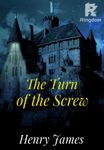
The Turn of the Screw is a short ghost story by Henry James A very young woman's first job: governess for two weirdly beautiful, strangely distant, oddly silent children, Miles and Flora, at a forlorn estate...An estate haunted by a beckoning evil. Half-seen figures who glare from dark towers and dusty windows- silent, foul phantoms who, day by day, night by night, come closer, ever closer. With growing horror, the helpless governess realizes the fiendish creatures want the children, seeking to corrupt their bodies, possess their minds, own their souls... But worse-much worse- the governess discovers that Miles and Flora have no terror of the lurking evil. For they want the walking dead as badly as the dead want them.
-
11. The Aspern Papers
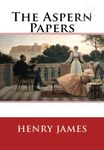
In this classic 1888 novella by Henry James, an anonymous narrator relates his obsessive quest to acquire some letters and other private documents that once belonged to the deceased Romantic poet Jeffrey Aspern. Attempting to gain access to the papers, the property of Aspern"s former mistress, he rents a room in a decaying Venetian villa where the woman lives with her aging niece. Led by his zeal into increasingly unscrupulous behavior, the narrator is faced in the end with relinquishing his heart"s desire or attaining it an an overwhelming price. One of James"s best-known and most acclaimed longer tales, The Aspern Papers is based on the letters Percy Bysshe Shelley wrote to Mary Shelley"s stepsister, Claire Clairmont, who saved them until she died.
-
12. Las bostonianas

"Las bostonianas", publicada en 1886, se considera una de las mejores obras de Henry James, lo cual no es baladí teniendo en cuenta la enorme producción del escritor estadounidense. Para los amantes de la literatura que disfrutamos con los distintos niveles de lectura que ofrece toda obra maestra, "Las bostonianas" es puro deleite; para los que, además, nos gusta descubrir las complicaciones técnicas y las complejidades argumentales a los que se ha tenido que enfrentar el autor y las diversas soluciones que ha encontrado, esta novela es un festín. Esta novela se centra en las peripecias de dos mujeres, habitantes de la ciudad a la que hace referencia el título, que se dedican en cuerpo y alma a la causa naciente del feminismo político. La mayor, Olive Chancellor, es una estricta luchadora que no tiene otro objetivo que reivindicar su causa hasta las últimas consecuencias; su pupila, Verena Tarrant, es una joven inocente con un vehemente don para la oratoria. En sus vidas se cruza Basil Ransom, primo lejano de la primera que, procedente del recién derrotado Sur, arriba a la próspera Boston para tratar de abrirse camino como hombre de leyes. Como es obvio, la concepción tradicional del rol de la mujer que tiene el joven chocará muy pronto de forma brutal con las ideas de su prima; sin embargo, la opinión de Verena sobre el sureño no será tan crítica…A través de esta historia el autor deja un minucioso testimonio de un tiempo en donde aparecían las primeras mujeres sufragistas, en la sociedad de Boston, a finales del siglo XIX. Su enorme poder para captar todos los vericuetos de la psicología de sus personajes y su tratamiento de los sentimientos entre mujeres son algunas de las grandes cualidades de esta novela. James consigue mostrar con su sutileza habitual la relación íntima de las dos mujeres, jugando con la posibilidad de un amor que se insinúa de manera muy velada.
-
14. The Turn of the Screw

The Turn of the Screw is a short novel or a novella written by American writer Henry James. Originally published in 1898, it is ostensibly a ghost story that has lent itself well to operatic and film adaptation. Due to its ambiguous content and narrative skill, The Turn of the Screw became a favorite text of New Criticism. The account has lent itself to dozens of different interpretations, often mutually exclusive, including those of a Freudian nature. Many critics have tried to determine what exactly is the nature of evil within the story.
-
15. The Turn of the Screw (Illustrated)
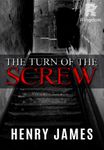
First published in the U.S. in the anthology collection The Two Magics in 1898, Henry James"s classic ghost story The Turn of the Screw has been enthralling readers for over a century and shows no sign of losing popularity as new generations continue to discover this chilling masterpiece. The novella"s anonymous narrator is a young woman, a parson’s daughter, who is engaged as governess to two seemingly innocent children at a remote English country house. What initially seems a idyllic soon turns nightmarish, as she becomes convinced that the children are consorting with a pair of malevolent spirits. These are the ghosts of former employees at Bly: a valet and a previous governess. In life, scandalously, the two of them had been discharged as illicit lovers, and their spectral visitations with the children hint at Satanism and possible s****l abuse. The book amply fulfills its pledge, laid down in the first few pages, that nothing can touch it in terms of sheer “dreadful—dreadfulness.”
-
16. The American
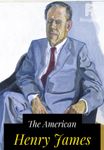
The American by Henry James. Henry James's third novel is an exploration of his most powerful, perennial theme - the clash between European and American cultures, the Old World and the New. Christopher Newman, a 'self-made' American millionaire in France, falls in love with the beautiful aristocratic Claire de Bellegarde. Her family, however, taken aback by his brash American manner, rejects his proposal of marriage. When Newman discovers a guilty secret in the Bellegardes' past, he confronts a moral dilemma: Should he expose them and thus gain his revenge? James's masterly early work is at once a social comedy, a melodramatic romance and a realistic novel of manners.
-
17. The Turn of the Screw
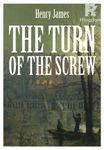
Widely recognized as one of literature"s most gripping ghost stories, this classic tale of moral degradation concerns the sinister transformation of two innocent children into flagrant liars and hypocrites. The story begins when a governess arrives at an English country estate to look after Miles, aged ten, and Flora, eight. At first, everything appears normal but then events gradually begin to weave a spell of psychological terror. One night a ghost appears before the governess. It is the dead lover of Miss Jessel, the former governess. Later, the ghost of Miss Jessel herself appears before the governess and the little girl. Moreover, both the governess and the housekeeper suspect that the two spirits have appeared to the boy in private. The children, however, adamantly refuse to acknowledge the presence of the two spirits, in spite of indications that there is some sort of evil communication going on between the children and the ghosts.
-
18. The Turn of the Screw

The story had held us, round the fire, sufficiently breathless, but except the obvious remark that it was gruesome, as, on Christmas Eve in an old house, a strange tale should essentially be, I remember no comment uttered till somebody happened to say that it was the only case he had met in which such a visitation had fallen on a child. The case, I may mention, was that of an apparition in just such an old house as had gathered us for the occasion—an appearance, of a dreadful kind, to a little boy sleeping in the room with his mother and waking her up in the terror of it; waking her not to dissipate his dread and soothe him to sleep again, but to encounter also, herself, before she had succeeded in doing so, the same sight that had shaken him. It was this observation that drew from Douglas—not immediately, but later in the evening—a reply that had the interesting consequence to which I call attention. Someone else told a story not particularly effective, which I saw he was not following. This I took for a sign that he had himself something to produce and that we should only have to wait. We waited in fact till two nights later; but that same evening, before we scattered, he brought out what was in his mind. “I quite agree—in regard to Griffin’s ghost, or whatever it was—that its appearing first to the little boy, at so tender an age, adds a particular touch. But it’s not the first occurrence of its charming kind that I know to have involved a child. If the child gives the effect another turn of the screw, what do you say to two children—?” “We say, of course,” somebody exclaimed, “that they give two turns! Also that we want to hear about them.” I can see Douglas there before the fire, to which he had got up to present his back, looking down at his interlocutor with his hands in his pockets. “Nobody but me, till now, has ever heard. It’s quite too horrible.” This, naturally, was declared by several voices to give the thing the utmost price, and our friend, with quiet art, prepared his triumph by turning his eyes over the rest of us and going on: “It’s beyond everything. Nothing at all that I know touches it.”
-
20. The Turn of the Screw
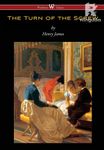
THE TURN OF THE SCREW, originally published in 1898, is a gothic ghost story novella written by Henry James. Due to its original content, the novella became a favorite text of academics who subscribe to New Criticism. The novella has had differing interpretations, often mutually exclusive. Many critics have tried to determine the exact nature of the evil hinted at by the story. However, others have argued that the true brilliance of the novella comes with its ability to create an intimate confusion and suspense for the reader.
